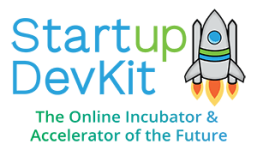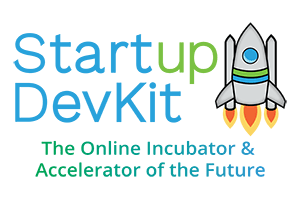Objectives and Expected Outcomes
- Feature Prioritization: Prioritize features based on their importance, impact, and alignment with product-led growth principles.
- Minimum Viable Product: Define the minimum set of features required for your MVP while considering how product-led strategies can enhance user adoption and retention.
- Feature Roadmap: Create a roadmap outlining the sequence in which features will be developed and released, incorporating iterative development cycles and product-led strategies.
What You’ll Learn
1. Feature Prioritization:
Impactful Features
Not all features are created equal. Prioritize features based on their impact on your MVP’s success, alignment with product-led growth strategies, and available resources. Features that directly address the core problem or pain point your product is solving are the most impactful. For example, if you’re building a task management app, features like task creation, assignment, and deadline setting would be crucial.
2. Minimum Viable Product and Product-Led Growth:
A) Core Features:
Core features are the essential functionalities that your MVP cannot do without. They should not only solve the user’s problem but also facilitate product adoption, engagement, and virality. For example, if you’re building a social networking platform, core features might include user profiles, friend connections, and news feed functionality, designed to encourage user interaction and network effects.
B) Understanding Product-Led Growth (PLG):
Product-led growth (PLG) is a go-to-market strategy that relies on the product itself as the primary driver of customer acquisition, retention, and expansion. In a PLG model, the product is designed to be intuitive, self-serve, and inherently valuable to users, leading to organic growth through user adoption, engagement, and advocacy.
C) Importance of Pain Point Solving:
Features that directly address the pain points of your target audience are crucial for a successful PLG strategy. By focusing on solving real problems faced by users, your product becomes indispensable, leading to increased adoption and retention. When users experience the value of your product in alleviating their pain points, they are more likely to become advocates, driving organic growth through word-of-mouth referrals and viral adoption.
D) Embracing Network Effects in Product-Led Growth
Network effects play a crucial role in the success of product-led growth (PLG) strategies. They occur when a product or service becomes more valuable as more people use it, creating a self-reinforcing cycle of growth. Understanding and leveraging network effects can help startups like yours achieve exponential growth and build a strong competitive moat.
Key considerations for identifying and integrating network effects in your MVP:
- User Interaction Design: Design features that encourage user interactions and social sharing. For example, social media platforms like Twitter become more valuable as more users join and create content.
- Referral Programs: Implement referral programs to incentivize existing users to invite new users, thereby expanding your network organically.
- Community Building: Foster a sense of community among users. Platforms like Reddit thrive on active user participation and community engagement.
- Data Utilization: Leverage user data to improve the product experience, making it more valuable for users as the network grows. This is particularly effective for SaaS products like Salesforce.
By strategically designing your MVP to harness network effects, you can create a product that naturally attracts and retains users, driving sustainable growth.
3. Feature Roadmap:
Iterative Development and Product-Led Strategies:
Your MVP is an iterative process. Adapt and pivot based on user feedback, market trends, and evolving business needs. Embrace product-led strategies such as in-app education, product-led onboarding, and data-driven iteration to drive user adoption, retention, and virality.
Tools
Feature Prioritization Matrices:
Utilize tools like Trello, Asana, or Monday.com to visualize and prioritize features using matrices such as the Value vs. Effort grid or the MoSCoW method, considering their alignment with PLG principles.
Wireframing Tools:
Focusing on user experience and product-led design, create wireframes of your MVP with traditional tools like:
Or use AI-based tools like: Visily, WireGen for Figma, Uizard, Mockplus, or Adobe Sensei
Project Management Platforms:
Create user stories, track feature development, and collaborate with your team, integrating PLG principles into your development workflow with platforms like:
Real-World Insight: The Case of Slack
Slack, the popular team collaboration platform, exemplifies the power of product-led growth. By focusing on user experience, viral growth mechanisms, and product-led onboarding, Slack transformed from a small internal tool into a dominant player in the enterprise communication space. Their intuitive interface, seamless onboarding process, and integration with other tools facilitated rapid adoption among teams. Moreover, Slack’s freemium model allowed users to experience the product’s value firsthand, leading to widespread organic growth and viral adoption within organizations worldwide.
Key Takeaway
Identifying the core features of your MVP is essential for focusing your efforts and resources on what matters most. By prioritizing features, creating a roadmap, and embracing product-led strategies, you can ensure that your MVP not only delivers value to users but also drives sustainable growth and success for your startup.
Assignment
Ready to define the core features of your MVP and embrace product-led growth? You’re going to identify the core features in the worksheet and/or spreadsheet below.
Use the worksheet and template below to get started!
MVP Course – Lesson 2.2 Worksheet: Identifying Core Features
MVP Course – Lesson 2.2 Worksheet / Core Feature Spreadsheet Template: Identifying Core Features
Then, once you’re done, let’s move on when you’re ready!

